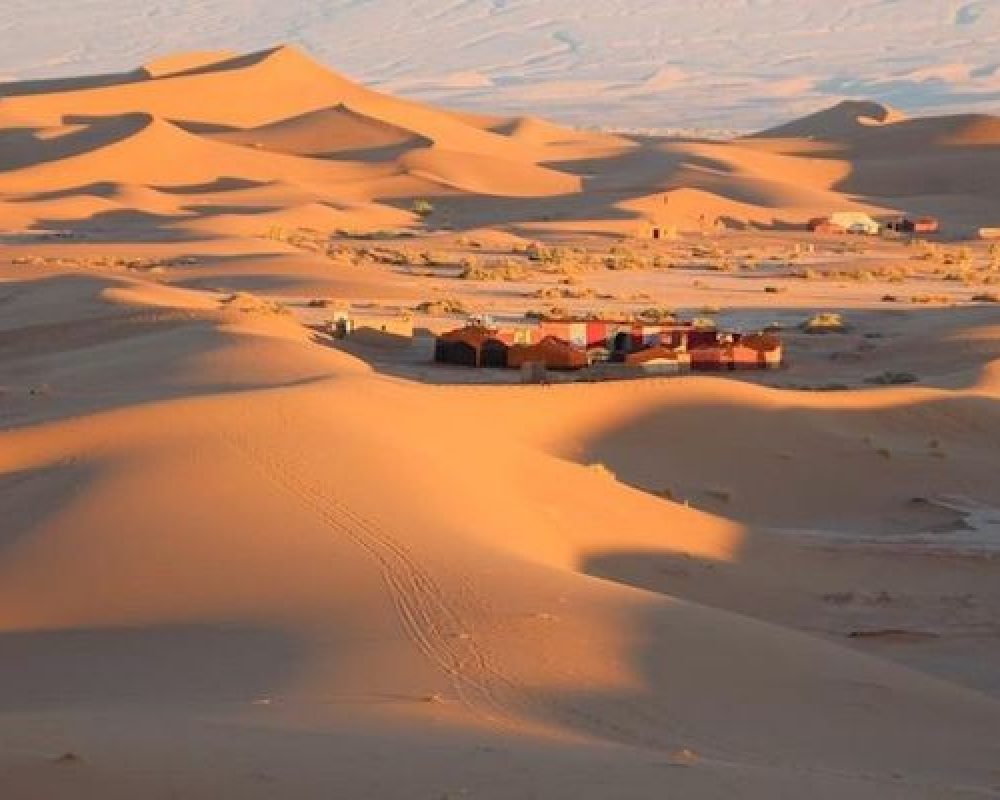

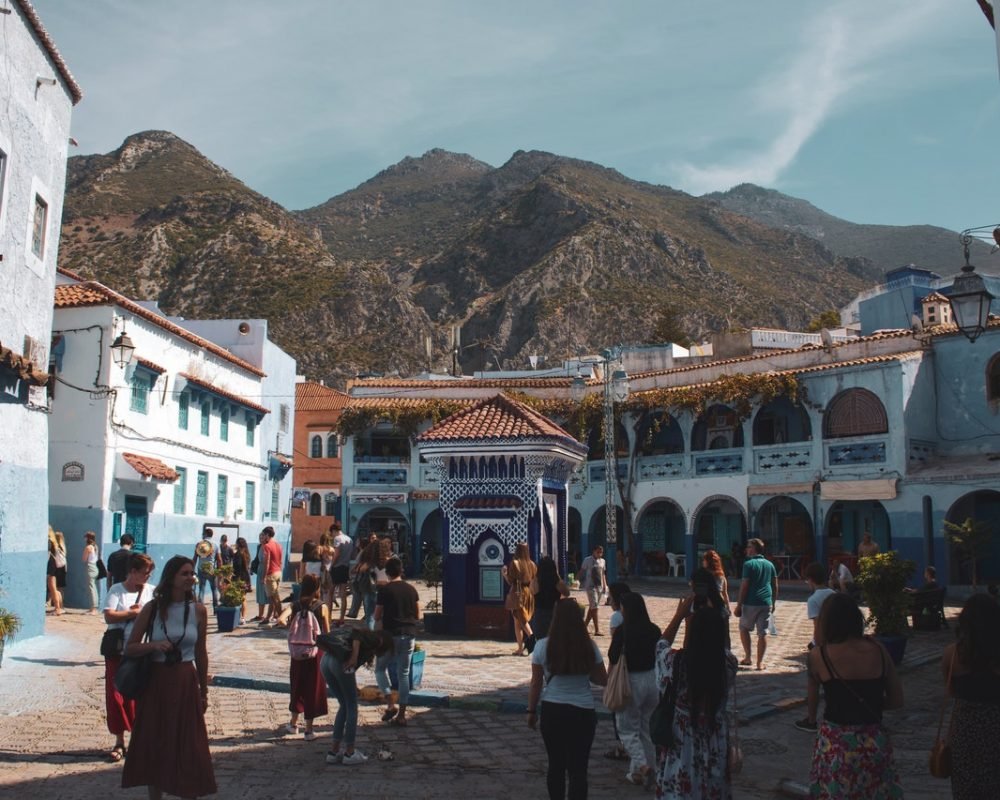
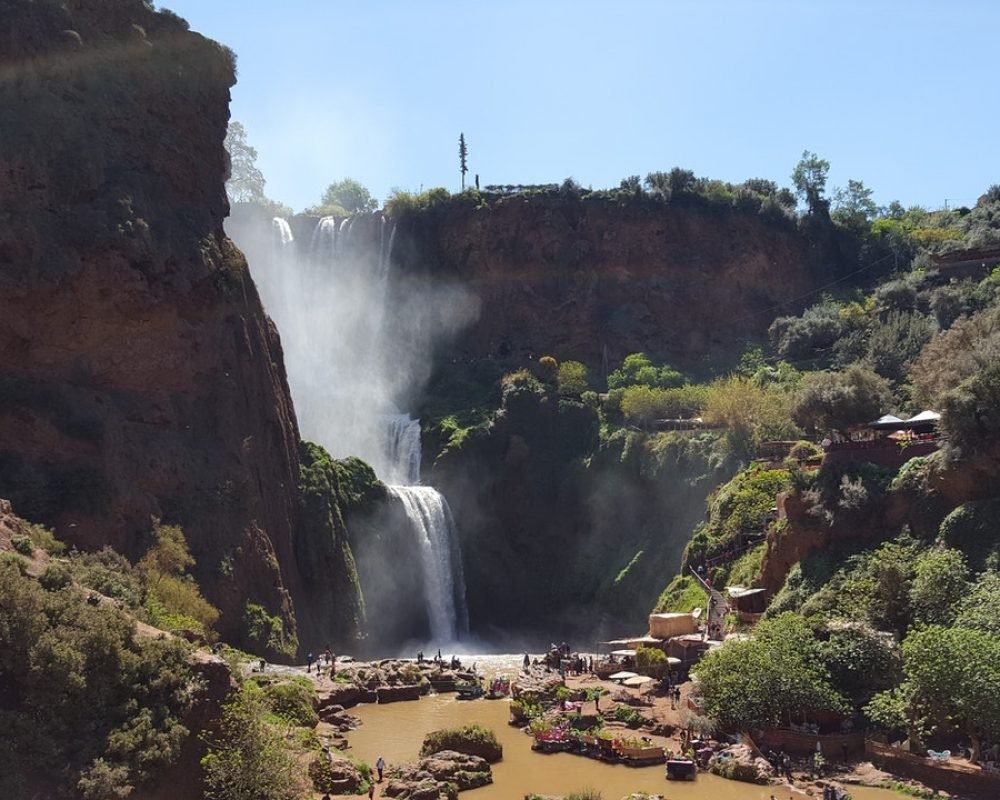
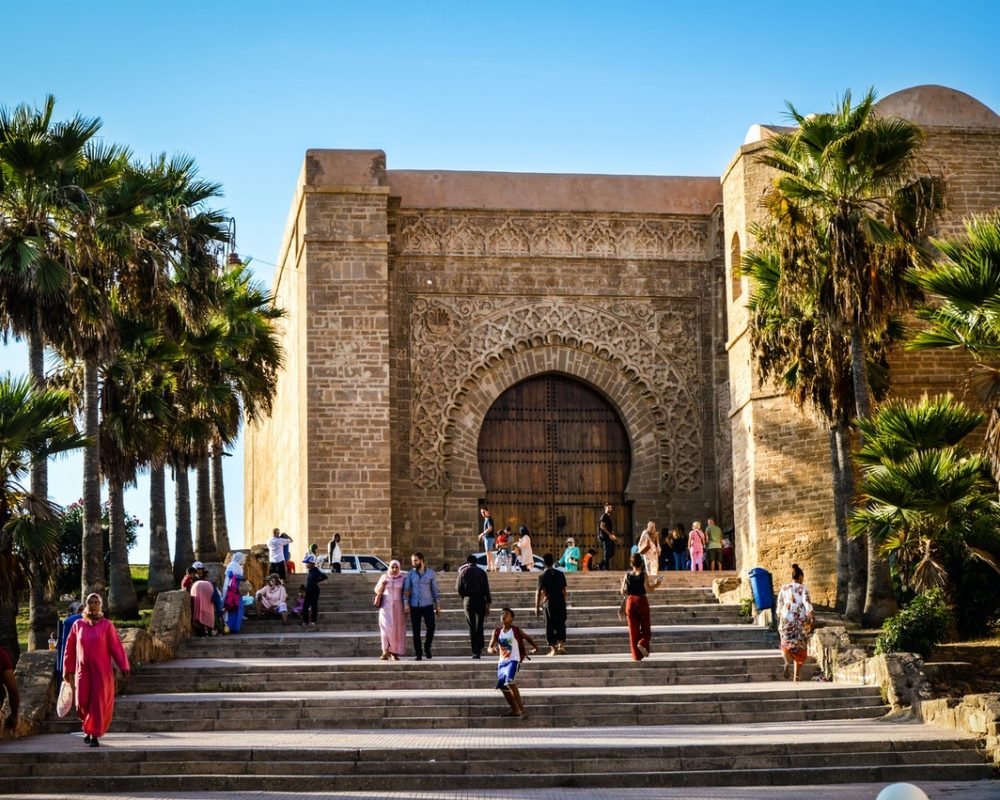
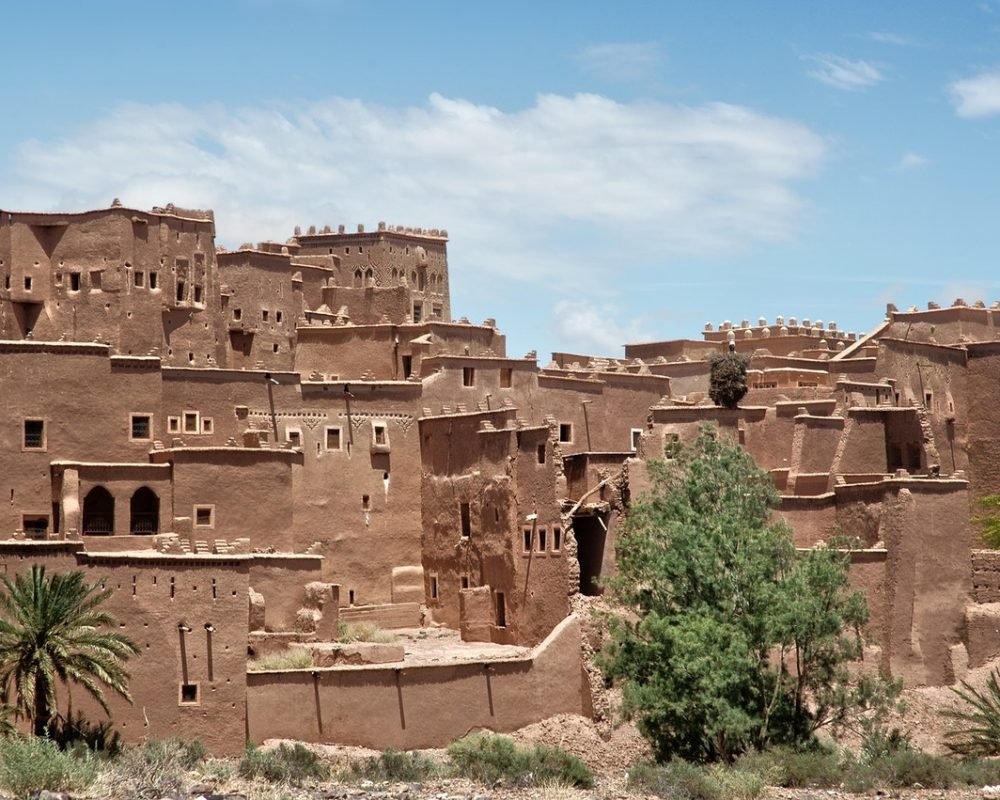
What to wear in Morocco
Winter (December to February):
- Layers are key as temperatures can vary throughout the day. Bring long-sleeved shirts, sweaters, and a jacket or coat for cooler mornings and evenings.
- Warm pants or jeans are suitable for daytime outings, while thermal leggings or long johns can provide extra warmth if necessary.
- A waterproof jacket or coat and sturdy walking shoes are essential, especially if you encounter rainfall.
- Don’t forget to pack a scarf, gloves, and a hat for additional warmth, particularly if you’re visiting mountainous regions or the desert at night.
Spring (March to May):
- Lighter layers are appropriate during the day, including T-shirts, long-sleeved shirts, and lightweight sweaters.
- Comfortable pants, jeans, or skirts are suitable for daytime activities.
- Bring a lightweight jacket or cardigan for cooler evenings, especially in March.
- A waterproof jacket or windbreaker may still be necessary, especially in March when rainfall is more common.
- Closed-toe shoes or sandals with good support are recommended for walking and exploring.
Summer (June to August):
- Lightweight, breathable clothing is essential to stay cool in the heat. Opt for T-shirts, tank tops, and lightweight pants or shorts.
- A wide-brimmed hat or cap and sunglasses are crucial for sun protection.
- Breathable, moisture-wicking fabrics are ideal, especially for outdoor activities.
- Sandals or lightweight walking shoes with good ventilation are recommended.
- Don’t forget to pack sunscreen with a high SPF and stay hydrated by carrying a refillable water bottle.
Autumn (September to November):
- Similar to spring, bring a mix of lighter layers and warmer clothing for cooler evenings.
- Long-sleeved shirts, lightweight sweaters, and a jacket or cardigan are suitable for daytime outings.
- Pants, jeans, or skirts are appropriate for exploring, along with comfortable walking shoes.
- Consider packing a rain jacket or waterproof layer, especially in November when rainfall increases.
- Scarves, gloves, and hats may be necessary in November as temperatures begin to drop.
Regardless of the season, it’s essential to pack modest clothing that respects local customs and traditions, particularly in more conservative areas of Morocco. Additionally, consider the activities you have planned and pack accordingly, whether it’s hiking in the mountains, exploring ancient medinas, or relaxing by the beach. By packing versatile clothing that can be layered, you’ll be prepared for whatever the weather brings during your visit to Morocco.
January and February :
If your home is buried in snow and ice in January/February, a Moroccan vacation may be a much needed welcome.
The weather in January/February tends to be chilly in the mornings, then warming up in the middle of the day, then becoming chilly in the evenings. If there’s no sun it will remain cold all day long, but the cooler temperatures make it more comfortable for those who wish to explore the warmer areas of the country. If you’ve always wanted to see the Sahara Desert, January is the time to do it. If you want to spend hours losing yourself in the sights and sounds of the Marrakech Medina, you’ll do it more comfortably in these months.
When visiting this time of year, the first thing to remember is that the temperature in Morocco in January can vary a LOT. When the sun is out during the day, it can feel quite warm at times. But at night, temperatures can drop very low. Add to that, the varying landscape of the country.
March and April :
March marks the beginning of springtime in Morocco. The temperature in Morocco in March grow warmer during the day, depending on the area of the country you visit, nights are still cold. Spring continues to blossom in Morocco in April, the days will be longer and warmer and the nights will be that beautiful warm weather feeling that’s got just a touch of breeze in the air. Add to that, the rain brings Morocco’s landscapes to life. Especially in the second half of March and into April, you’ll enjoy vibrant green almost everywhere you go.
You’ll get a mix of warm days and cool nights, you can travel to any part of the country, desert and mountain, without worrying about freezing or burning your butt cheeks off,
And, if you really want to ride that camel in the desert with a turban on your head, you can! You can go anywhere, and enjoy so much of the country if you plan to stay during these two months. No limits, no worries.
May and June :
In May, it gradually starts getting hotter and sunnier, so it’s time to take out your summer clothes, the days get much warmer in May in Morocco in inland cities such as Marrakesh & Fez. Along the Mediterranean coast, the ocean breeze keeps things a bit cooler. The farther into the desert you get, the higher the daytime temperatures will be. Some places can be uncomfortably hot, especially for those sensitive to heat. On the other hand, a visit to the Atlas Mountains in May will feel downright refreshing.
Generally, May is very green with field crops thriving usually and poppies around the place as well.
June is when it’s starting to warm-up significantly in many areas, especially the south and inland areas, Along the Mediterranean and Atlantic coastlines the weather tend to be cool. But inland, the temperatures go up quite a lot, but despite that, although once the sun goes down, things cool off and become much more pleasant.
On the other side, June marks the beginning of Morocco’s dry season, don’t forget to keep water with you due it’s the best way to make sure you stay well-hydrated.
July and August:
July and August are the two hottest months of the year in Morocco, they are the least ideal months to travel to Morocco but they shouldn’t be ruled out. It’s the perfect excuse to spend the afternoon cooling off by the pool. On the good side, Temperatures are more bearable along the Atlantic and Mediterranean coastlines and the High Atlas mountains. But while in the inland areas, be prepared for days to be hot and very dry.
September and October :
Wow! Didn’t Our Summer Go Fast!! Morocco’s summer peak heat is subsiding in September and the autumn slowly arrives. The temperatures cool off quite a bit long the coastline even in the Atlas mountains, so you can enjoy many different activities without worrying about the weather, But the desert regions still retain a fair amount of heat, so perhaps it’s worth another month’s wait to ride a camel to a desert camp.
In October, you definitely start feeling the shift from summer to Autumn with dropping temperatures. It is still quite warm during the day, which is the perfect time to visit morocco. In the mountains, temperatures drop even more. And if you are staying on the coast, you may feel at times that the heat of the sun is in direct competition with the chill of the ocean breeze. Please note, that after the dry hot summer, the rain starts to increases at times.
So if you dream of a vacation in September/October, Morocco is ready to welcome you!
November and December :
Late fall and early winter in Morocco is sunny and mild, it’s the perfect time to explore the coast to the mountains to the desert, such an amazing adventure waiting for you! In November all around the morocco, temperatures continue to drop, and it is usually one of the months where it rains the most in the country, I would only say November is another fantastic period to visit the city.
December’s weather is still wonderful in Morocco, with most of its cities and port towns experiencing warm daytime temperatures and hours of glorious sunshine. But it can get cold when sundown.
Generally Morocco’s weather in December is cool, mild and somewhat rainy, but it also brings many sunny days ideal for hiking and exploring the cities.
the Mediterranean coast will be lovely and warm during the daytime (but it can turn chilly at night). The climate in the Sahara is at its most extreme; hot and dry but after dark, you’ll need to bundle up.